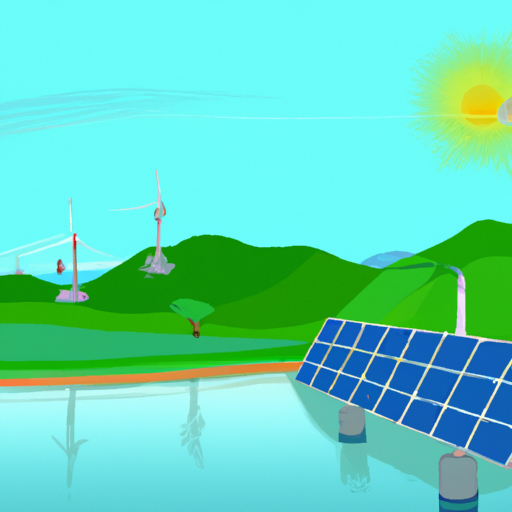Recently reported advances by MIT scientists now make it possible to produce clean hydrogen from water using the power of sunlight. This breakthrough stems from an age-old technique familiar to many camp-goers—using a magnifying glass to concentrate sunlight to such intensity so as to ignites wood. However, this reality is now scaled up massively, employing concentrated solar power (CSP) derived from a mirror array to deliver sufficient energy for powering supercritical steam turbines for up to 15 hours.
Australian Breakthrough for Energy Storage
The Commonwealth Scientific and Industrial Research Organization (CSIRO) in Australia recently showcased the novelty of their CSP research facility located north of Sydney, Newcastle. Their groundbreaking approach involves “falling ceramic particles” that capture and store solar energy as heat. Dr. Jin-Soo Kim, the head of the solar technologies team, announced their critical achievement of reaching a temperature of 803 °C (1477º F) for the first time at the falling particle receiver.
The Relevance of Concentrated Solar Power
Concentrated Solar Power (CSP) is not a budding technology but dates back to the 1800s, getting its start from European inventors. The technology has advanced drastically, adopting several variants, including mirror-ringed parabolic dishes to molten salt-filled tower systems. The limitation with molten salt—its inability to heat up sufficiently to leverage the potential power of concentrated sunlight—has prompted the use of ceramic particles as small as sand grains to achieve ultra-high temperatures for storing vast amounts of heat.
The Falling Ceramic Particle Technology
The falling ceramic particles method relies on gravity for processing tiny, dark-colored ceramic particles. The particles are dropped from a hopper at a tower’s peak, where they absorb and store sufficient heat as they pass through concentrated solar energy. The stored energy resembles a heat battery, which has enough capacity for about 15 hours. However, some functional issues required ingenious resolutions, like using a “catch and release” system to prevent the particles’ rapid spreading due to fast falling, hence boosting heating efficiency.
CSP as a Sustainable Alternative for Coal Power Generations
CSIRO believes that its CSP technology deployed with ceramic particles can offer a reliable and green power source. They show confidence that this technology will play an essential role in achieving Australia’s vision of shutting down all its coal-fired power stations before 2033. The current CSP pilot system in Newcastle boasts 400 mirrors; however, the full potential of a fully functional setup could generate a power equivalent to a 100 MW coal plant.
CSP Facilities in Global Electricity Generation
Currently, 18 countries deploy CSP facilities, generating a total of 6,460 megawatts of electricity. An additional 3,859 MW of projects are currently under construction, indicating the sector’s promising potential. Aside from electricity generation, CSP—including the falling ceramic particle technology—also flaunts the ability to help decarbonize Australia’s heavy industries.
Additional Applications of CSP
CSP’s potential uses are immense, with some industries already showing keen interest. Mars Petcare, for instance, is contemplating installing a CST system to deliver renewable steam to power its pet food plant. As a result, the company expects to reduce its methane gas usage by half. Furthermore, the businesses aim to operate at net zero by the end of 2025 through augmenting its solar panel system with the new CST system.
CSIRO Falling Particle Technology and Polyvalent Applications
Falling particle CSP, with adequate infrastructural support, could contribute to up to 40% of Australia’s total electricity generation by 2050. Beyond meeting the country’s power demands, the technology also possesses the potential for high-temperature heavy industrial applications—mineral processing, for example. According to Dominic, this technology would be pivotal in achieving a sustainable energy future for Australia, furthering emission reduction efforts.
Conclusion
As rightly stated by Bill McKibben, the sun generously provides all the energy humans will ever need. What we must do is devise means to capture and appropriately use this gift. Against this backdrop, CSP and its corresponding technologies such as the falling particle technology will likely be integral to the future energy mix.



























